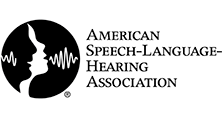
The correct hearing solution can make the world of difference for an adult suffering from hearing loss. From young adult, to working adult, to senior, hearing aids and other amplification devices provide access to the world around you and the ability to participate in life again with confidence.
If hearing loss is diagnosed during your hearing evaluation, it is likely that a trial with amplification would be your next step in addressing your hearing concerns. All of our hearing aid fittings are verified by both objective measurements and patient self-report and questionnaires. Using the Verifit Speechmapping system, we have the ability to measure the level of sound provided by a hearing aid while in the user’s ear, enabling the audiologist to accurately and objectively evaluate the frequency response of the hearing aid for each individual. Speech testing is also conducted to further verify our fittings and provide information regarding functional hearing aid benefit.
As the world of technology continues to advance, hearing devices hold more options than ever before. They are lighter and more discreet, while offering features such as rechargeable batteries, Bluetooth connectivity, and more seamless listening by automatically adapting to the various challenging listening environments that we encounter every day.
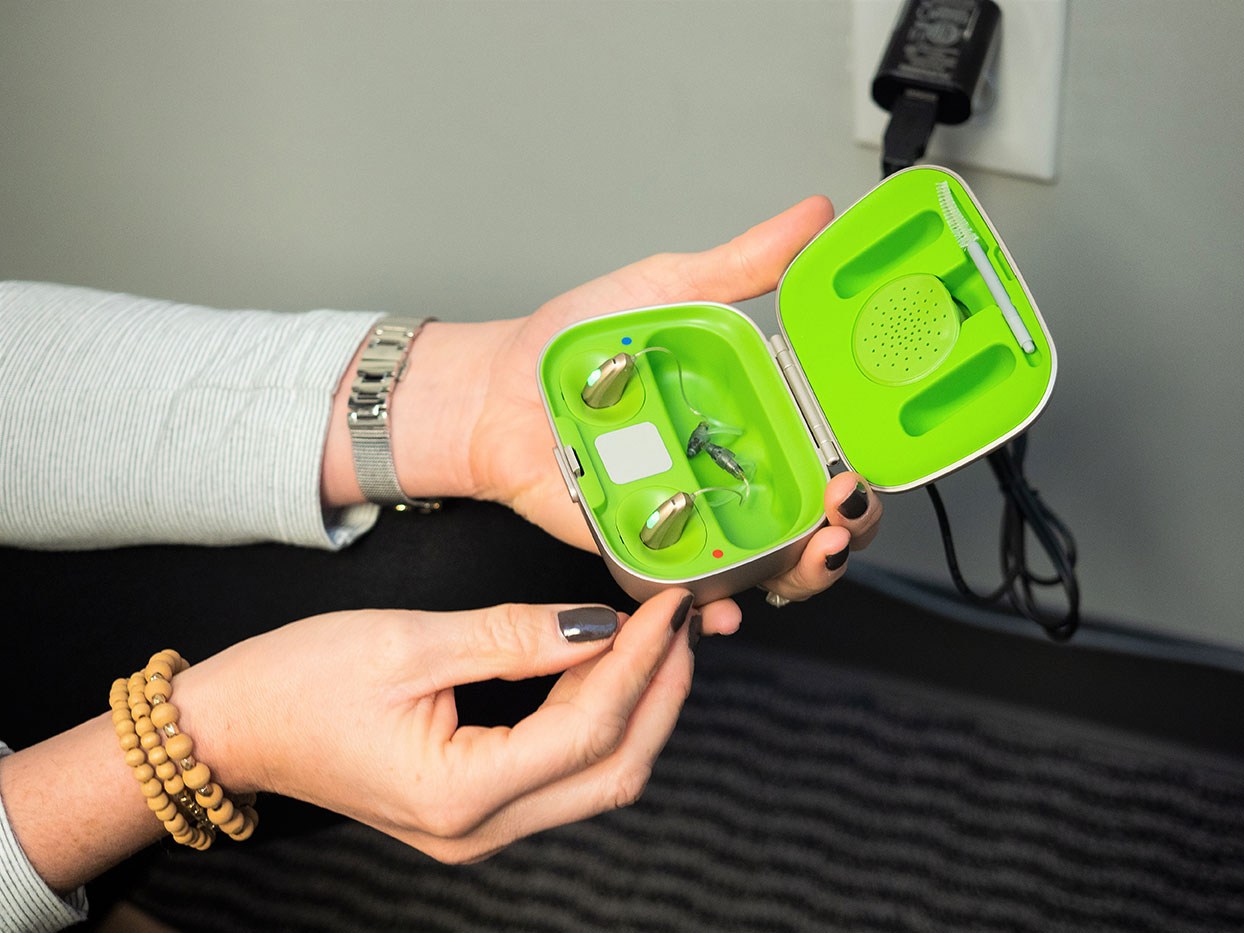
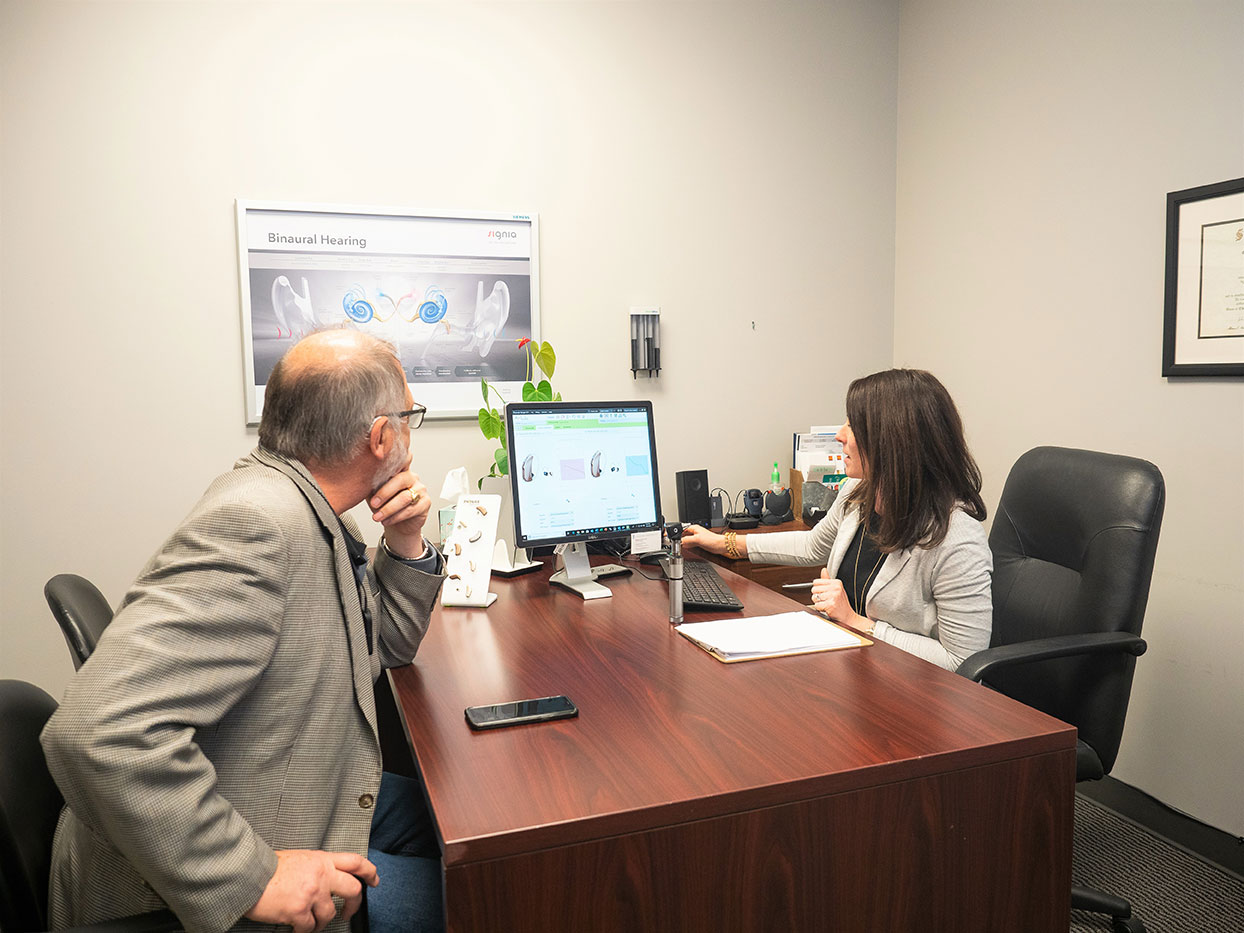



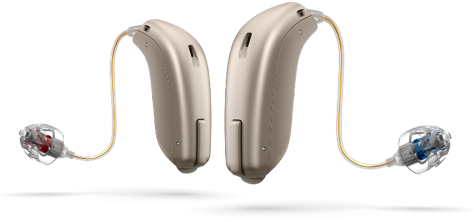

Can you imagine listening to a podcast directly through your hearing aids? Or answering a call without having to take out your phone? These are all real opportunities now with the latest advancements in hearing aids that allow for streaming from Apple devices to made for iPhone® hearing aids. At Lakeside Audiology, we offer a variety of made for iPhone® solutions to meet the highest expectations.
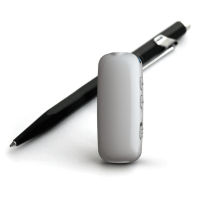
A remote microphone provides assistance in background noise and over distance, similar to an FM system. You can give it to someone who is speaking and then hear their voice clearly and directly in your hearing aids. Ideal to help you hear better in more complex situations. I have used this system and I have found it to be outstanding.
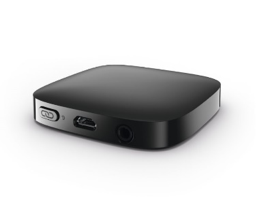
TV streamers offer a clear and sharp sound directly from your TV to your hearing aids with no intermediary device. This makes watching TV more comfortable and enjoyable.
So while your family is free to set their own volume, you can adjust the volume using your hearing aids or the accompanying app on your phone to listen at a level that works best for you.
.
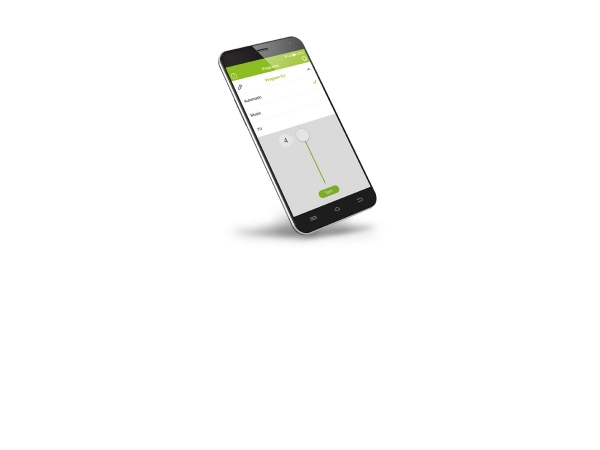
RemoteControl Apps turn your smartphone into an advanced remote control for your hearing aids. It optimizes your hearing system by providing more control and flexibility. Once installed, you can adjust volume, program selection, and access information on your hearing aids through the application.
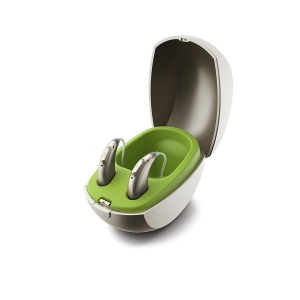
Hearing technology has advanced to provide multiple rechargeable options to decrease waste and increase patient satisfaction. Rechargeable systems use one of two power-platforms, either utilizing a Lithium Ion battery or the Z-power rechargeable system. Our audiologists may discuss with you the reason for choosing one system over another
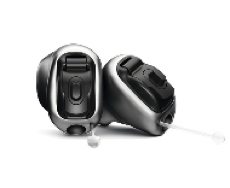
Often considered the most discreet option available, the IIC and CIC hearing device options fit completely within the ear canal allowing for a low-profile hearing device solution that meets the aesthetic needs for many persons.
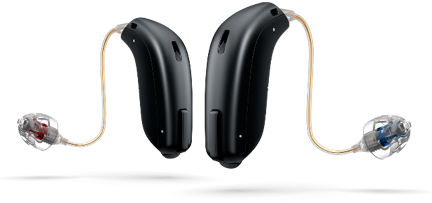
The RIC hearing device is a behind the ear hearing aid solution that places the speaker within the ear canal. This separation of the speaker from the hearing aid housing allows an “open fit” hearing aid solution that has resulted in many reporting increased comfort and sound quality.
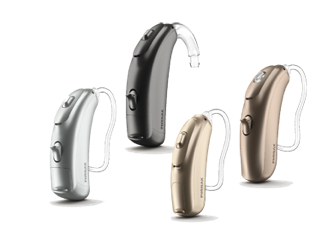
The BTE is the traditional style of amplification that can fit all ranges of hearing loss. With the miniaturization of computers, BTE hearing devices have continued to be made in smaller and more light-weight designs with a higher level of durability and water resistance.
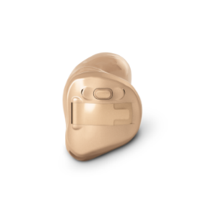
ITC and ITE hearing aid styles are often used for individuals that have reduced dexterity or coordination for putting their hearing aids in their ears. This design allows for continued independence in self-care for many, while also allowing for excellent sound quality and comfort.
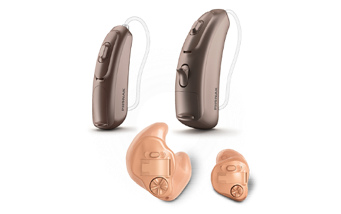
CROS technology allows for sound directed towards a non-hearing ear to be transferred to the ear where a signal may be heard. This solution is for those who are unable to benefit from a hearing device on one ear. This solution is available in most styles of technology allowing for listeners of all abilities to take advantage of this advanced listening solution.
Each hearing loss and patient are unique. For various reasons, some individuals are unable to wear a traditional hearing aid that transmits sound through their ear canal. When there are issues with anatomical abnormalities of the outer or middle ear, history of chronic ear infections or drainage, or single sided deafness (complete hearing loss in one ear only), a bone conducted hearing device may be the right solution. Bone conducted hearing devices capture sound and transfer it through bone vibrations directly to the cochlea (the hearing organ in your inner ear). This bypasses your outer ear and middle ear entirely and create a new pathway for hearing.
Nonsurgical Devices
These can be worn on a headband or attached directly to the skin with adhesive. This option is best suited for children who are not old enough for the surgical procedure (because their skulls have not yet fully hardened) or adults whose hearing loss is mild, who cannot have surgery, or elect not to have surgery.
Surgical Devices
Surgically implanted devices have two parts: an internal component and an external processor. The internal component is placed under the skin and within the bone behind your ear while the sound processor is worn externally.
Lakeside Audiology is able to work with outside physicians to help with device selection and referral for the surgical component. In many cases, once cleared by the surgical team, you would return to our center for fitting of device (activation & orientation) and continued audiologic care.
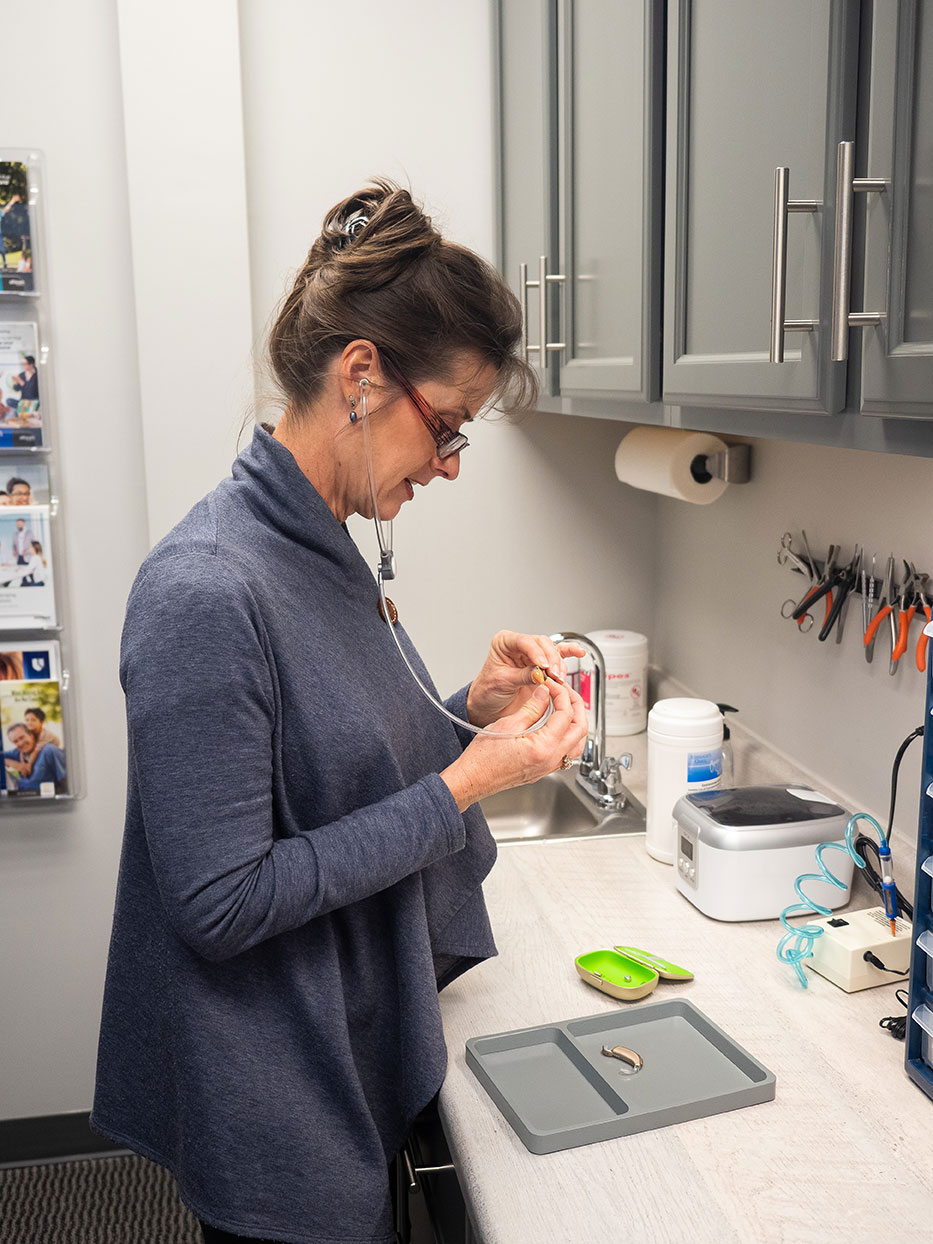
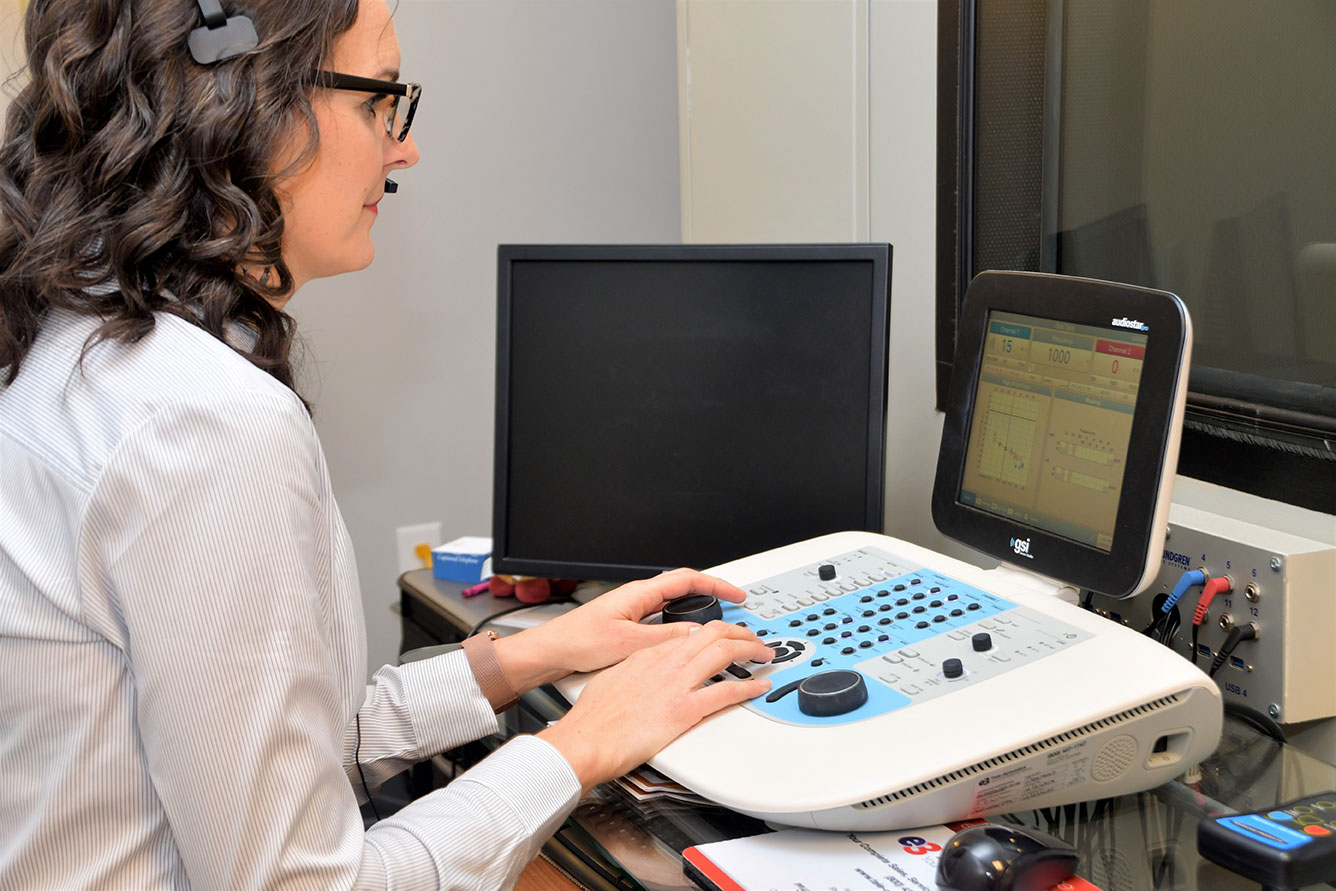
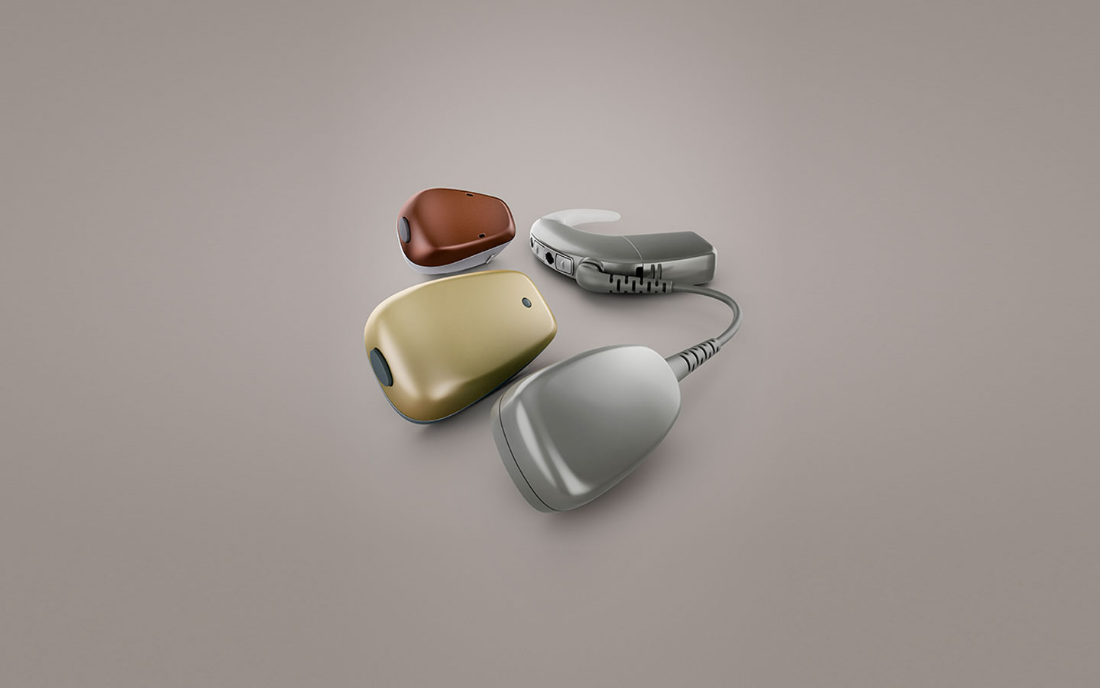
The Cochlear BAHA system (BAHA Softband and BAHA Sound Processors pictured) offers a reliable bone conducted hearing solution with a variety of accessories and Bluetooth compatibility to enhance the listening experience. Available in both surgical and non-surgical options.

The AdHear is a new breakthrough in bone conducted hearing solutions. It is a non-surgical option that is attached to the mastoid bone using an adhesive adapter. Simply stick the adaptor behind your ear and click on the audio processor to access a clear bone conducted sound. It is an option for all ages that may want to avoid surgery and want an alternative option to the softband.
Available in both surgical and softband options, the Ponto offers advanced signal processing in a discreet sound processor solution.

The Osia is a surgically implanted solution by Cochlear Americas. An implant is placed under the skin, attached to the BI300 which is Cochlear’s latest titanium implant featuring TiOblast™ surface technology. The implant is designed to promote faster and stronger integration to the bone (through a natural process known as osseointegration). Certain candidacy criteria exists.
Bone Conduction Systems are indicated for conductive hearing loss, mixed hearing loss and single-sided sensorineural deafness. Contact us today at 803-620-8250 to further discuss candidacy requirements and schedule an appointment.
Assistive Listening Devices (ALDs) and Hearing Assistive Technology (HATs), are terms that encompass devices that help an individual manage the most difficulty listening situations. They can be used at work, at home, in places of entertainment, and depending on the product, can be used with or without hearing aids. While hearing aids and cochlear implants provide benefit to individuals with hearing loss, some patients may need additional assistance to help improve their hearing and understanding in the most difficult situations.
Categories of ALDs:
A wide array of devices are available to help ease communication in challenging listening situations. Indications for which device is recommended is dependent on each person’s needs and listening environments.
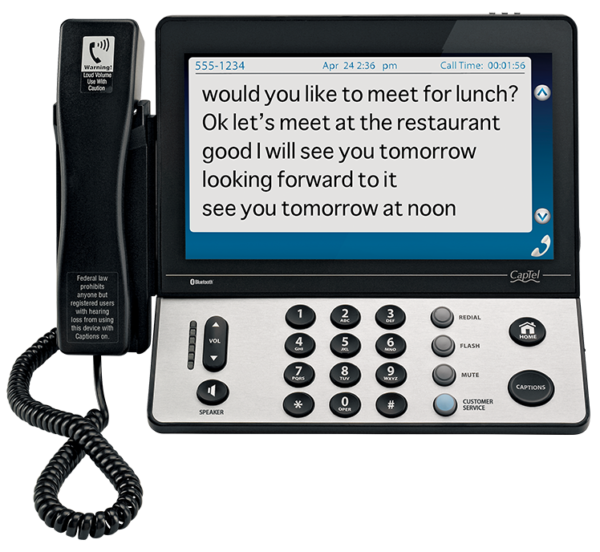
Specifically designed for people with hearing loss, giving a wider range of volume and tone control to help hear the conversation. Many amplified phones also provide an option for closed captioning, which allows you to read what the caller is saying on a screen attached to the phone during the conversation.
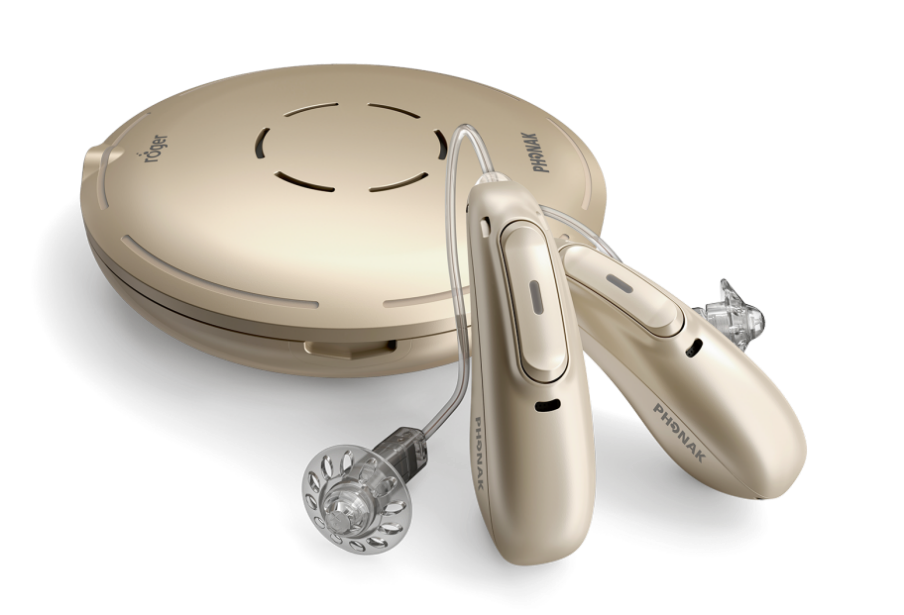
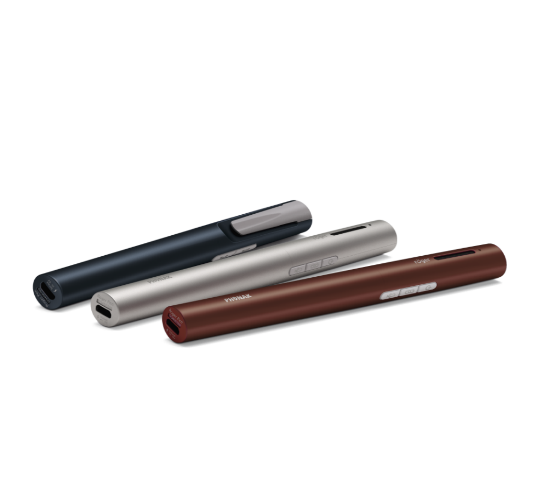
Designed to improve the signal-to-noise ratio in difficult listening environments. An FM system counteracts the effects of distance and minimizes the effects of poor acoustics in a room. It operates by picking up the talker’s voice from a microphone and sending the voice wirelessly to a receiver worn by the listener. FM systems are most often used in conjunction with hearing aids but can also function as stand-alone systems.
Once used mainly in the school setting, FM systems are now available and accessible in the adult portfolio as well. It is a noisy world out there. If you struggle with background noise, even with hearing aids, an FM system can help enhance your hearing aid use and give you more ease of listening in the most challenging of environments.
Designed to help you stay connected to your environment and improve your safety. Alerting devices rely on amplified sounds, visual cues, and even vibrations to alert you to sounds in your environment.
Some examples of alerting devices include:
Induction Loop Systems: Used in large areas, often churches and theatres, a wire loop is used to create a special zone for listening. The listener accesses the speech signal through an electromagnetic field that is picked up by the telecoil in their hearing aid or receiving device. Please note, not all hearing aids are equipped with a telecoil.
Bluetooth devices: Bluetooth technology is becoming an increasingly popular means of allowing hearing aid users to tune in to a variety of hearing aid accessories and connect to the world of technology. Bluetooth is a wireless communication platform that allows transfer of data between two or more electronic devices. Over the last few years, most hearing aid manufacturers have developed hearing aids that have Bluetooth streaming capabilities. The audio signal can be set to stream to your hearing aids and the signal can be amplified and shaped to match your unique hearing needs. When listening to music, you can stream the sound directly to your hearing aids, allowing your hearing aids to double as wireless earbuds. Similarly, television can be sent directly to your hearing aids with use of an additional tv accessory, overcoming the factor of distance and background noise to provide a clear and rich sound quality. Each hearing instrument model has a unique platform of accessories and compatibility with outside devices. Talk with our audiologists about your needs to come up with the solution right for you.
A variety of custom in-ear products are available for many uses. They are made by taking an impression of the ear, which is a simple and non-invasive procedure done in-office in the matter of a few minutes.
Noise induced hearing loss is avoidable when proper precautions are taken. Whether we encounter loud noise deliberately, like going to a rock concert, or inadvertently as we go through our daily lives, it is undeniable that repeat exposure to loud noises has a negative impact on hearing.
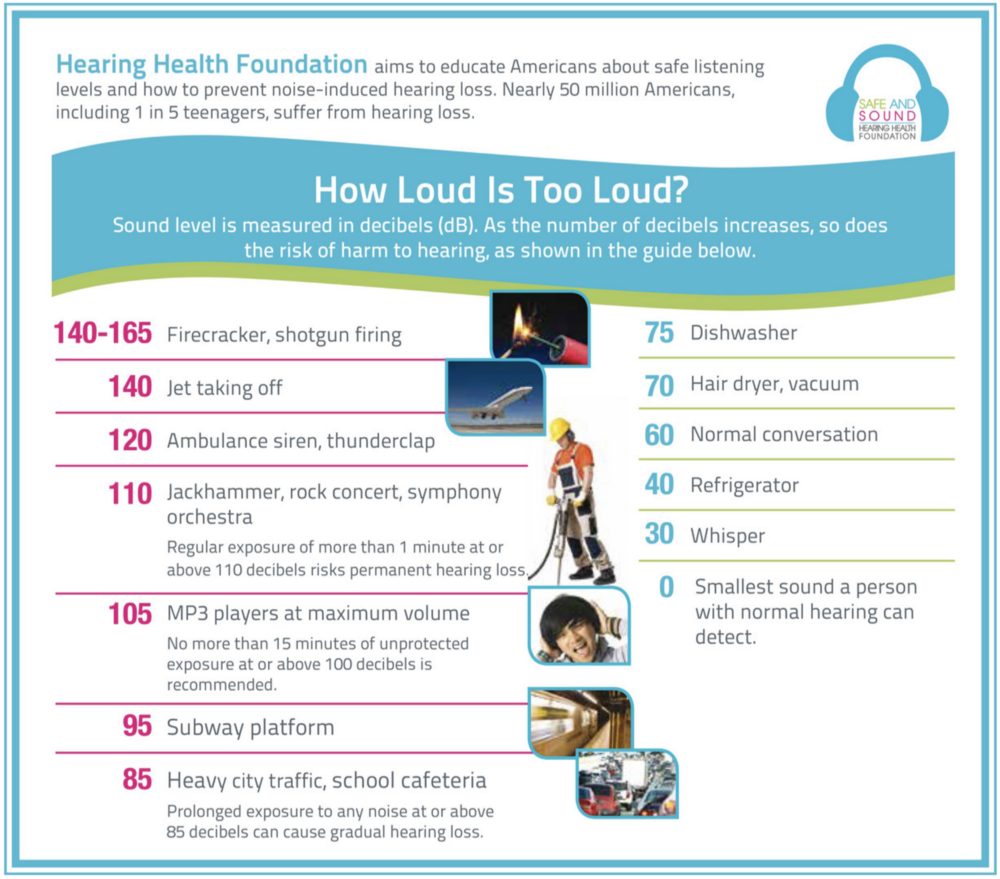
There are two general types of hearing protection: headphones and earplugs. Each is appropriate for specific tasks, and their use overlaps to a certain degree. Some people in very loud work environments use both. Custom earplugs allow for a comfortable and non-disposable option for protection of hearing.
Industrial earphones
Great protection for those working in an industrial or construction setting. These earplugs allow situational awareness and ability to detect speech while protecting ears from hazardous noise levels.
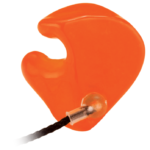
Shooters’ earphones
Shooting produces a high level sudden sound that can cause immediate hearing damage when the ear is not protected. Shooting earphones contain a small valve that closes when shots are fired. The sound wave hits the valve before it can reach the eardrum. The valve, when open, allows shooters and hunters to hear more sound around them than conventional earphones allow.
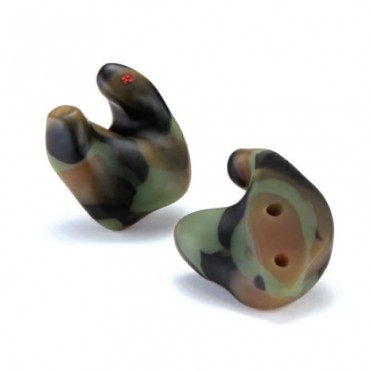
Musician’s earphones
Musician’s plugs are custom fit earplugs that are useful for musicians and music enthusiasts. These earplugs reduce the overall volume of the music to protect your hearing, but still preserve the natural sound quality of the music.
.
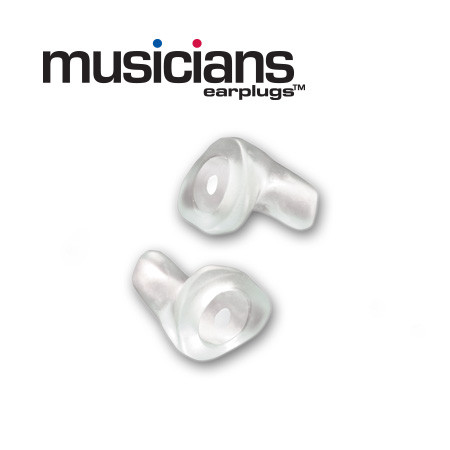
A custom earmold is one of the options used to couple a behind-the-ear hearing aid to your ear and provide direction of sound to the eardrum. Earmolds provide a comfortable fit and are available in a variety of styles.
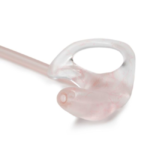
Custom swim molds are designed to protect the ear from exposure to water and pressure. They are recommended for patients with perforated eardrums, PE tubes, of those with a tendency to get swimmer’s ear. Swimmolds can help reduce the occurrence of outer ear infections by reducing moisture in the ear canal. Hint: These can also double as hearing protection!


iPod and MP3 player earmolds are available to provide a comfortable fit for earbuds, which do not universally fit well comfortably. If you listen to music while running or exercising but struggle with your earphones falling out, this is a great option for you.
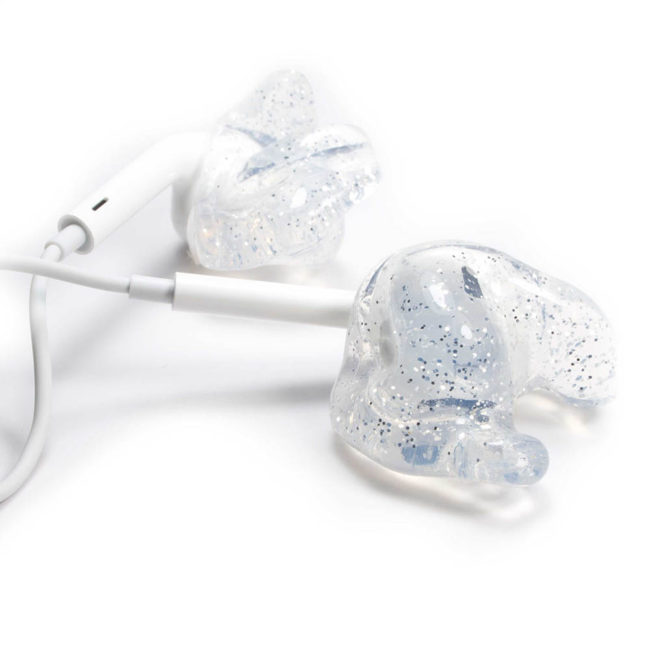
To schedule an appointment with Lakeside Audiology and learn more, contact us at 803-620-8250 or send an email to by filling out form below.
“I have two children with hearing loss and have worked with many audiologists over the years. Lakeside Audiology provides AMAZING care. Both Dr. Block and Dr Jensen are professional, caring and experts in the field of pediatric audiology. They are great with babies, young children and teenagers. Without hesitation I recommend this practice.”
“Lakeside Audiology has been so amazing for my little guy with hearing loss. We switched to Dr. Jensen after a not so great experience at another audiologist office. Our insurance doesn’t cover visits, but thankfully BabyNet works closely with Lakeside. We plan to stay with Lakeside, even if it’s not covered by the time he’s 3. Dr. Jensen has always been very supportive of each stage we have been through so far and the decisions we have made for our son. She has been more than helpful and encouraging through our journey and I trust her fully. I would highly recommend Lakeside Audiology to anyone..of any age! These ladies are just wonderful!”
“BEST place for the entire family for all of your hearing needs. My 3 year old daughter was seen by Dr. Kim Block and it was a fantastic experience. As a newer mother, the facility did a great job helping a nervous mother and daughter through the process of scheduling, the actual appointment, and explaining the results. It was such a easy and painless process. I highly recommend this friendly facility to care for your loved ones. In addition, to the great service, both audiologists are highly educated and trained, which you can TRUST. The brand new and clean facility has the highest quality equipment and clean toys for the children to play with. I can’t say enough great things about this place. This is a no-brainer, call and make an appointment today!”
“We switched to Lakeside after years at multiple audiologists for my two young children with hearing loss. There is no comparison! Dr. Jensen and Dr. Block are both so nurturing and kind, yet professional and knowledgeable. They go above and beyond to show my family the best care at every appointment.”
“I can’t even begin to say enough about Dr. Block. Our daughter has severe/profound bi-lateral sensorineural hearing loss and we have been to many audiology offices in the last 2 years. We couldn’t be happier to have finally landed in an office where our daughter is a person, friend and family member of this practice instead of another medical chart. Dr. Block is thorough, willing to listen and is amazing at what she does. So happy to have her in our lives as we continue down this hearing loss journey!”



